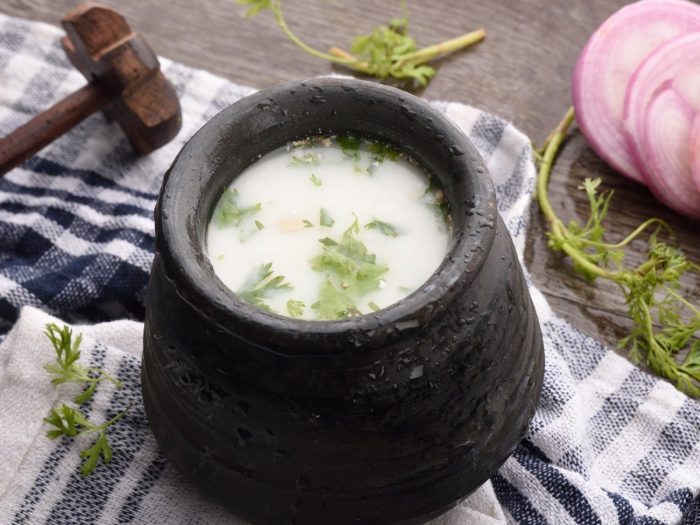Many people hear the word buttermilk but aren’t sure what it is, or whether it is actually a healthy addition to their diet. Before switching over a part of your dairy intake, it is important to understand exactly what it contains and what it could do for your overall health.
What is Buttermilk?
It is a type of milk that has been cultured or fermented to produce a tangy or an earthy flavor. In the past, buttermilk was the residual liquid that was left over after people churned butter into a solid. The milk that was left behind would often contain small flecks of butter, which would begin to ferment when left overnight. The sugars in this milk would begin to convert into lactic acid, providing the unique flavor of this beverage.
The flavor and usefulness of buttermilk in baking made it extremely popular, and it remains so to this day, but modern-day buttermilk has very little to do with churning butter. Instead of allowing the leftover butter liquid to ferment overnight, bacterial cultures are added to regular 1 or 2% milk and allowed to ferment for 12-15 hours. This can produce a slightly thicker milk than traditional cow’s milk, but it is not as heavy as cream. Furthermore, this fermentation process provides that desirable tang to the milk, and also makes it better for certain cooking and baking uses. [1]

You can keep your buttermilk plain, sweet, or spicy. Photo Credit: Shutterstock
Serving Size : Nutrient Value Water [g] 90.13 Energy 40 Energy [kJ] 169 Protein [g] 3.31 Total lipid (fat) [g] 1.07 Ash [g] 0.89 Carbohydrate, by difference [g] 4.79 Sugars, total including NLEA [g] 5.36 Calcium, Ca [mg] 116 Iron, Fe [mg] 0.05 Magnesium, Mg [mg] 11 Phosphorus, P [mg] 89 Potassium, K [mg] 151 Sodium, Na [mg] 148 Zinc, Zn [mg] 0.42 Copper, Cu [mg] 0.01 Manganese, Mn [mg] 0 Selenium, Se [µg] 2 Fluoride, F [µg] 4 Vitamin C, total ascorbic acid [mg] 1 Thiamin [mg] 0.03 Riboflavin [mg] 0.15 Niacin [mg] 0.06 Pantothenic acid [mg] 0.28 Vitamin B-6 [mg] 0.03 Folate, total [µg] 5 Folate, food [µg] 5 Folate, DFE [µg] 5 Choline, total [mg] 17.7 Vitamin B-12 [µg] 0.22 Vitamin A, RAE [µg] 14 Retinol [µg] 13 Carotene, beta [µg] 1 Vitamin A, IU [IU] 47 Vitamin E (alpha-tocopherol) [mg] 0.05 Tocopherol, beta [mg] 0.02 Tocopherol, gamma [mg] 0.03 Tocopherol, delta [mg] 0.02 Vitamin D (D2 + D3), International Units [IU] 1 Vitamin K (phylloquinone) [µg] 0.1 Fatty acids, total saturated [g] 0.66 4:0 [g] 0.03 6:0 [g] 0.02 8:0 [g] 0.01 10:0 [g] 0.02 12:0 [g] 0.03 14:0 [g] 0.09 16:0 [g] 0.23 18:0 [g] 0.11 Fatty acids, total monounsaturated [g] 0.25 16:1 [g] 0.02 18:1 [g] 0.22 Fatty acids, total polyunsaturated [g] 0.03 18:2 [g] 0.02 18:3 [g] 0.01 Cholesterol [mg] 4 Tryptophan [g] 0.04 Threonine [g] 0.14 Isoleucine [g] 0.17 Leucine [g] 0.31 Lysine [g] 0.28 Methionine [g] 0.09 Cystine [g] 0.02 Phenylalanine [g] 0.17 Tyrosine [g] 0.17 Valine [g] 0.22 Arginine [g] 0.1 Histidine [g] 0.1 Alanine [g] 0.11 Aspartic acid [g] 0.28 Glutamic acid [g] 0.74 Glycine [g] 0.07 Proline [g] 0.33 Serine [g] 0.2 Sources include : USDA [2]
Buttermilk Nutrition Facts
Buttermilk has a very similar nutritional profile to regular milk (or any type of milk used to prepare it). It contains high levels of calcium, B vitamins, proteins, and certain probiotics, thanks to the fermentation process. It also contains vitamin D and vitamin A, as well as a relatively low level of calories and fats. For example, if you make this drink with low-fat milk, you will only add 100 calories and 2 grams of fat to your intake for the day. [3]
Substitutes for Buttermilk
If you don’t want to make buttermilk at home, and can’t purchase any of this cultured beverage from any store, there are a few substitutes that can replace it effectively, including kefir, sour cream, tartar, and yogurt, among others.
Yogurt
While yogurt tends to be thicker than buttermilk, it does contain the same probiotics and a bit of a tart kick to your food’s flavor, while maintaining some of the same health benefits as well. [4]
Kefir
With a very similar nutritional profile of this beverage, you can use kefir as a substitute, although you should be sure to check the fat content of kefir and ensure it lies between 1-2%, which tends to be the level of buttermilk.
Tartar
Cream of tartar can be mixed with regular milk to mimic the acidic environment of this cultured variety of milk, but only a relatively small amount is needed – no more than 2 teaspoons per cup of milk. [5]
Sour Cream
If you add extra water to a bit of sour cream, it should reduce the thickness and mimic the acidic nature of buttermilk, its texture and behavior during baking. [6]
